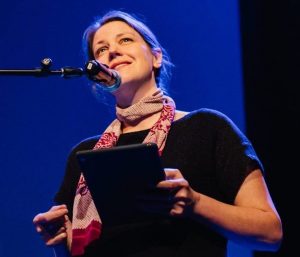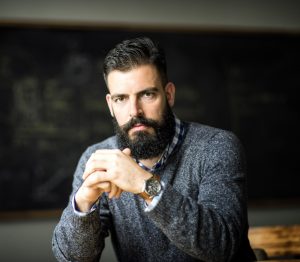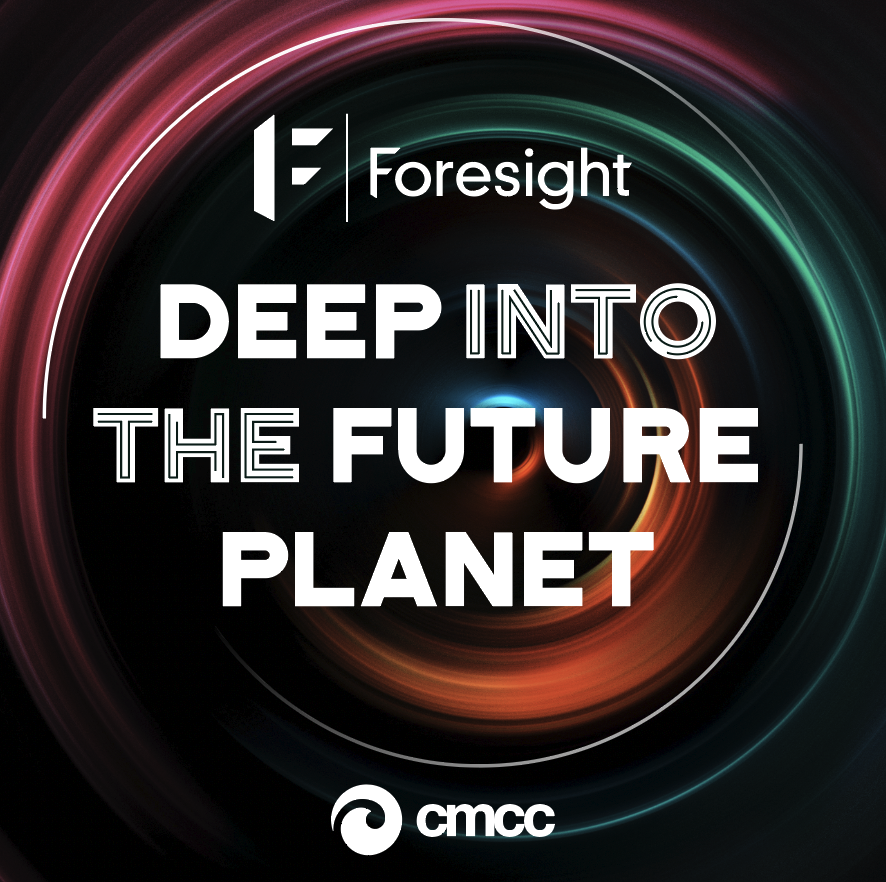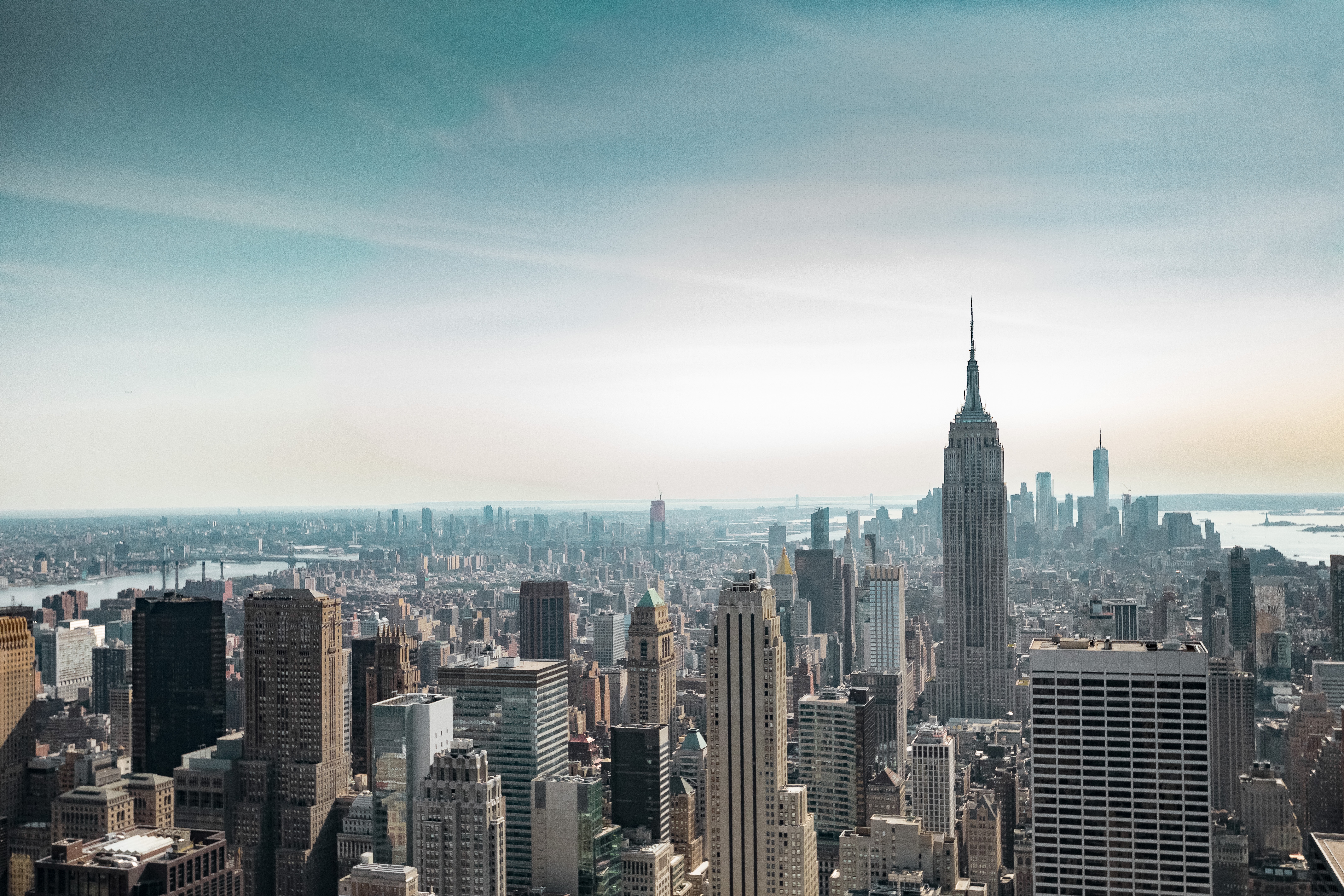In this second episode, we dive into the sound of ice and the stories of microbes. In the words of microbiologist Donato Giovannelli, “the whole planet is run by microbes, and they don’t care much about what humans do: the planet will keep functioning either way, with new animal species, new ecosystems.” The question is, what role will humans play in the future?
Foresight – Deep into the Future Planet, a podcast produced by the CMCC and FACTA.
 Judy R. Twedt climate data sound artist at the University of Washington.
Judy R. Twedt climate data sound artist at the University of Washington.
She weaves together climate science and digital sound arts to create data-driven soundtracks that bring greater expression and immediacy to climate communication.
A native of Tacoma and a fifth-generation Washingtonian, she has a master’s degree in Atmospheric Sciences, where she used state-of-the-art global climate models to understand Antarctic sea ice variability.
Her pieces blend data sonification with natural sound recordings to promote greater awareness of our rapidly changing planet.
Her research combines work in Atmospheric Sciences and the program on Digital and Experimental Arts to create new sonic forms of climate communication and to study its impacts on listeners. No stranger to interdisciplinary work, her Bachelor’s degree from Colorado College was in History and Philosophy, with an emphasis on environmental ethics.
 Donato Giovannelli is a microbial ecologist working on the microbiology of extreme environments.
Donato Giovannelli is a microbial ecologist working on the microbiology of extreme environments.
He is a Professor of Microbiology at the University of Naples Federico II where he works on the coevolution of Life and Planet.
He is also an Affiliated Scientist at the Earth-Life Science Institute, Tokyo, a Visiting Associate Research Professor at Rutgers University, USA and an adjunct scientist at the Institute for Marine Biological and Biotechnological Resources of the National Research Council of Italy (CNR-IRBIM) in Ancona, Italy, and a guest investigator at the Woods Hole Oceanographic Institution (WHOI), USA.
He is also part of a new non-profit institute dedicated to exploring the origins and nature of consciousness, YHouse, located in Manhattan, New York, USA.
He was recently awarded an ERC Starting Grant to look at the co-evolution of biogeochemically-relevant proteins and trace metal availability in the environment.
Podcast transcript
Donato Giovannelli: This should be a completely egoistic action. We are doing it for our own survival. We’re not doing it for saving the planet – the planet doesn’t care, it has been through massive extinction and cataclysm long before we showed up. So, doing something drastic right now is about saving ourself, not about saving the planet.
Judy Twedt: If you’re on top of the Arctic Ocean on an icebreaker, for example, you just can see forever. It feels like it’s white and quiet unless the ice is groaning and cracking under the ship and there’s a sort of sense of austerity to the environment.
The ice. For decades, it has been the main and strongest symbol of climate change: melting glaciers, Arctic coastal erosion, sea ice habitat loss, polar bears at risk. Today we know that the climate crisis is much deeper and complex than that, and is already affecting our closest environments. And yet, studying the ice remains one of the best ways to understand our changing climate.
I am Elisabetta Tola, science journalist, and this is Foresight – Deep into the Future Planet, a podcast produced by the CMCC Euro-Mediterranean Centre on Climate Change and FACTA.
Today, we travel through some of the coldest areas of our planet. Our guests will bring us through a scientific and artistic journey to learn from the ice and listen to its voice and sounds.
Judy Twedt: The change in the ice that we know from the satellite record, but now also increasingly just from people’s observations, is something that has been happening over decades. As the ice is melting, it’s becoming worse. Storm action has more effect on the coastline there because the ice isn’t there to suppress storm waves. So it’s actually getting stormier.
This is Judy Twedt. She is an American researcher at the University of Washington with an expertise in Atmospheric Sciences and Climate Modeling. She used to work with global climate models to understand Antarctic sea ice variability. But then she decided to put together climate science and digital sound arts to create data-driven soundtracks: yes, Judy Twedt composes music from climate data. A process called data sonification.
Judy Twedt: I’m not the only scientist who’s starting to turn datasets into sound. This is something that’s been a capability of ours for several decades now.
The word sonification means to turn into sound and you can think of it similarly to data visualization. Data is just a set of numbers. And when we decide how to present those numbers, we can either look at them or we can do something else. And I’m like, listen to those numbers. But you have to choose how to map those numbers to either color and lines or something like that. If you’re going to visualize it or you can map those numbers of the data to notes, for example, the pitch of the notes on a piano keyboard where, for example, higher keys might relate to higher numbers and lower keys might relate to lower numbers on the keyboard. That would be, you know, keys on the right could be higher numbers and keys on the left could be lower numbers. But you could also make a choice like, okay, I’m going to say that maybe I’ll not use pitch, but I’m going to use volume. So if a number is higher, you’re going to hear it as louder or hear it as softer. So there are lots of choices for mapping.
Given her background, some of Judy’s favourite datasets to perform data sonification are related to sea ice.
The piece we are listening to is called “Arctic Sea Ice”. With this composition, Judy Twedt allows us to appreciate and experience almost four decades of Arctic sea ice loss in just minutes.
Judy Twedt: This is a satellite record of sea ice. So that starts in 1979 when we first started viewing Earth in space with scientific satellites for Earth monitoring. And so it goes from 1979 into the present. And I used a measurement called the Area of Sea Ice. That’s looking at the total of how much of the Arctic Ocean is covered by sea ice. And that, of course, varies month to month. But that gives you one number. It’s the total area. And that, of course, even though it goes up and down every year with the seasons each year during the summer melt season, when the sea ice melts back, it’s been getting lower and lower.
So if you look at how it varies relative to the long-term average, then basically you’ll have it above zero early, early in the dataset and then it goes to below zero later on in the data set. So that’s called an anomaly dataset.
Each note on the piano keyboard represents one month of data, whether it’s above or below average, and that’s played by the right hand. And then the left hand plays basically a set of four chords that are positioned on the keyboard right near the zero line or what would be the long term average. And those four chords are just played one for each season. So you can hear the rhythm of the seasons from the left hand, from the chords that are played, and then the right hand is playing actual month to month data. And you’ll hear that, of course there’s a lot of noise in the system, so it goes up and down, up and down.
But it’s, you know, month to month, it goes up and down a little bit. But over time it’s going down, down, down to the lowest notes in the keyboard. And visually, if you see this performed, the pianist’s right hand has to cross over the left hand. And towards the last half of the piece, the right hand is constantly crossed over the left hand because the ice is constantly lower than the long term average. So there’s also this visual dimension to this piece based on the gestures used by the two hands when playing on the piano keyboard.
Even without seeing the live performance, beautifully played by pianist Kristina Lee, this music helps us transform climate data into an emotional experience. And perhaps feel the urgency of the climate crisis we are facing – the same feeling Judy Twedt had while working as a scientist on an icebreaker, doing her research in the Arctic.
Judy Twedt: I mean, if you’re on top of the Arctic Ocean on an icebreaker, for example, you just can see forever. It feels like it’s white and it’s quiet unless the ice is groaning and cracking under the ship and there’s a sort of sense of austerity to the environment.
You know, I think with this piece, it was a bit of sorrow.
The Arctic is warming faster than anywhere else on earth. It’s hard to connect to that if you’ve never been to the Arctic. And yet it does affect all of us, you know. And even if it doesn’t affect all of us, I mean, you can still connect to it. It does. But even if you don’t feel that, you can sort of still empathetically connect to the people and the ecosystems there that are undergoing just tremendous change right now.
Researchers going on a scientific mission in the polar areas know this better than anyone else. Donato Giovannelli, an Italian Professor of Microbiology at the Department of Biology of the University “Federico II” of Naples, often visits extreme environments to explore the emergence and evolution of life: a key aspect for understanding our planet. Just a few weeks ago he returned from a long stretch of fieldwork in the nordic country sitting just south of the Arctic Circle: Iceland.
Donato Giovannelli: Iceland is a fantastic place. We just came back and this has been a very intense field year. We are recovering from COVID, so we went to a lot of the locations that were planned for the past two years in Iceland. We were there with two very distinct purposes. The first one was to track how the microbial ecosystems in Icelandic hot springs respond to earthquakes and especially the earthquakes associated with the new volcano that started erupting in the south of Iceland last year.
They usually release a very large amount of volatile gases, including CO2, hydrogen and methane. And so we were there to study how microbes responded to these gases coming from deep underground. On the other side, we were working on a very special place up in Iceland where we were diving into the fjord at about 40 meters deep. The water of the fjord is about four degrees during the season. There’s a site where there are very large columns, like 50 meter tall columns, of a very special mineral that spew hot water that is 70 degrees and that is mainly alkaline, very basic. So this interface between the water and the seawater of the fjord outside had very special microbial ecosystems where a host of Extremophile are thriving and the type of minerals found there are very similar to minerals found on Mars, on the Eridania basin.
We sample microbes across a very large geological scale, usually a few tens or hundreds of kilometres. We did this in Iceland. We’re going to do it again next year, where we’re going to traverse the entire Iceland coast to coast. We did it in Chile in April. We did it in Svalbard. We’re doing it in a lot of different locations because we’re trying to understand what microbes are doing at a planetary scale, a tool that you cannot sample at the very local scale, but you need to cover a lot of ground.
Microbes are found deep into the Earth. In some locations, there are microbes in the Earth’s crust all the way down, even kilometres. Diving into fjords or exploring active volcanoes, Donato Giovannelli and his team study these microbial ecosystems to understand how life started and evolved on this planet. And microbes are much more important than we might expect.
Donato Giovannelli: You know, we have a very anthropocentric view of our planet. When we speak about microbes, most people stop at coronavirus. They stop and think only of disease or things like this. The reality is that that is a microbial planet. This planet is completely run by microbes. The oxygen we are breathing, me and you and everybody else right now is not being produced by the plants outside our window. It’s actually being produced by bacteria, cyanobacteria in the ocean probably a few thousand years ago. And this planet has been microbial for a very long time. Eukaryotes are relatively new. Multicellular life is 700 million years old. The planet is 4.5 billion years old for 4 billion years or 3.8, depending on who you ask, there has been life on this planet and it was microbial life. So basically, whatever the action, whatever cycle of elements, the cycle of carbon, the cycle of sulfur, the biogeochemical cycle of nitrogen is actually controlled by microbes. So if we want to understand in any meaningful way the impact we have on the planet and our complex system like the planet is responding to our activity, we need to understand what the microbial world is doing. And this is especially true in the Arctic environment and pull-up system where microbes play a key role in controlling all the biogeochemistry and the cycling of volatiles, like carbon monoxide, carbon dioxide, methane and all the greenhouse gases that we hear about on TV.
And therefore, microbes are crucial also to understanding our changing climate. In his lab, Donato Giovannelli combines classic microbiology techniques with data from comparative genomic, phylogenetic, geochemistry, environmental surveys and computational approaches. This data could feed current climate models, and help develop more accurate predictions about the evolution of the future climate.
Donato Giovannelli: Our approach can provide new data and new processes to include in current climate modelling. I mean, climate modelling in the end is like accounting. You need to know where things are coming of where things are going, and the more precise you are with your accounting, the better the prediction will be. And right now, in some environments, microbes are not considered or included in some of the climate models.
So the more we understand how our planet functions and the more we understand the role of microbes in the functioning of the planet, the better our prediction will be regarding the future of climate for this planet, and the better would be our reconstruction of the climate. So I think that studying microorganisms in extreme environments and microorganism interaction with geology and with the atmosphere and minerals can help us not just understand where we come from, but also where we’re heading, especially with the rapid changes that are going on right now.
According to Donato Giovennelli, the only way to get ready for the rapid changes our world is facing is using an interdisciplinary approach. We need to combine the science, data, models, and scenarios we have as much as possible, look at the same problems from different angles and find common strategies to better understand the only planet we have.
Donato Giovannelli: It’s interesting because we spent the last 300 years dividing disciplines more and more and more to become ever more specific and getting always more precise on different topics. We divided biology in terms of discipline. Probably close to a hundred different disciplines within biology and even microbiologists are divided even though the reality is that natural processes don’t care about our division. And they work. So the new view, the emerging view right now is often called interdisciplinary science or transdisciplinary science, and in reality, this is just a way to connect reductionist science back to systems science. So connecting back to the complexity of the natural system.
Complex does not mean we don’t understand it. Complex means that there are a lot of pieces that are playing at the same time and a lot of feedback going on. So we often speak about melting ice, but we don’t explain all the consequences. And you know, Iceland and other parts of our planet are not just experiencing the melting of glaciers and ice caps, which is devastating. They are also experiencing an increase in the amount of permafrost melt, which means not just more greenhouse gases, but very practical problems. I was saying during the summer, because permafrost is getting deeper and deeper, a foundation doesn’t have anything to lay on pipelines. See, things need to be rebuilt every season as the permafrost gets deeper. At the same time, you get soil erosion. You get coastal erosion. It is more difficult to sustain the Arctic ecosystem because of very drastic, dramatic events, you know, landslide increase. And the whole system becomes very unstable. And Iceland is going to face a lot of serious environmental problems, like most of Europe and the rest of the world, wind that will just be very different depending on where you are on the globe.
We have to embrace complexity also when looking for solutions to address the climate crisis we are facing all around our planet. And when it comes to icy regions, unfortunately, there aren’t any simple solutions. So, once again, an interdisciplinary approach is needed.
Donato Giovannelli: I was recently discussing with a colleague about the idea of covering ice with plastic sheets to protect them. That’s a simple solution or an overly simplified solution. The reality is that even if we had to stop emissions tomorrow, we still don’t know how far we are into the problem. How long is going to take for the planet to slow down the current change? Our low carbon dioxide emission will still be high because the ocean will give back the feedback loops with microbes. With the still ongoing, the ice melting will be going on and we don’t know how far we’ve gone. In other words, we don’t know how deep we had it through the mud yet. At the same time, unless we do something drastic and altogether, I don’t think there’s going to be an easy solution. We speak a lot about engineering, and carbon capture storage. For sure. Some of these new techniques or new approaches will need to be implemented at one point or another. But the reality is that until we are all ready to change dramatically the way we live our life, unless we are willing as a population, as citizens, as countries, as politics, to do some drastic change, we will be forced to change by a changing climate, our quality of life.
Once one of my mentors said that we spent hundreds of years dividing discipline and now we should go back to being natural philosophers, and look at the Earth system as a single whole of interacting complex systems.
Interdisciplinarity is a key word also used to describe Judy Twedt’s projects on data sonification. She even designed a brand new interdisciplinary PhD program: her research combines atmospheric sciences and digital and experimental arts to create new sonic forms of climate communication. And, like the most fascinating experiences and discoveries, this wasn’t a linear process.
Judy Twedt: The way that I got into this specific line of work of making soundtracks out of climate data was really not planned. I was just frustrated one-day teaching, you know, kind of doing finals review for an undergraduate class, showing slide after slide of data, trying to understand if the students were interpreting it right. And there were a few charts in particular that I thought, these are just so important, and I don’t think they’re landing right. I don’t think that unless you’ve really devoted a lot of your time to understanding how significant this one graph is, for example, it’s hard to understand and we could do better, you know, and maybe visual information isn’t the only way to do this. Furthermore, this is a time-based phenomenon. Climate change is something that’s evolving over time. And maybe if we listened to these data points instead of looked at, then they would reach us in a different way. And some of the more important data sets could be expressed in a way that might stick with people better. So kind of with that in mind and I just started experimenting. I was using Python for my data analysis at the time and I just kind of found some libraries that allow me to turn data sets into many notes, and I shared it with some colleagues and they got pretty excited about it and we made a musical piece out of it and the reception people were just really interested in it. And I saw immediately that it caught people’s attention in a way that’s really different from visual data sets, visual representation of data sets.
There are plenty of studies in the neuroscience field showing the different effects of music on our brain. So why not use music to engage people about one of the most urgent issues humanity is facing, the climate crisis? In Judy Twedt’s view, science communication about climate is often too rational. It doesn’t talk to people. Can music do that instead?
Judy Twedt: Yeah, absolutely. I mean, it does. Bypass our rational brain and connect right to our limbic system because of its vibration waves. And that’s not to say we should avoid a rational brain, of course, starting with the data from a scientific perspective.
But furthermore, and increasingly, I think there’s a real need just for human processing, for those of us who feel mournful and feel grief and are experiencing the sense of loss. And there’s also a need for a kind of a therapeutic way of relating to the information that allows us to recognize that it is tragic what’s happening and that it’s okay to feel that. And it’s okay to, like, let your heart break when you hear the data. You know? And that’s not a way of like getting stuck, but actually, that’s a way of moving through this and keep going. To not get stuck in despair or overwhelm, but actually to recognize how difficult this is so that we can continue to find ways to push for the transformations we need.
To take action on the climate crisis we need an emotional connection. But we also need to completely change our perspective, according to Donato Giovannelli. Stop talking about saving the planet, and start talking about saving us.
Donato Giovannelli: So far the way the climate problem has been approached and in discussion with the public has not been fruitful. Every time we hear about climate and work for mitigating the effect of climate change or doing something about the current climate crisis seems like we need to do something because we are altruistic. Seems like often people say do something for the planet, do something for the environment, do something for nature, or do something for the animals. I think that’s wrong. The planet will keep functioning either way. A lot of animals will disappear. A lot of ecosystems will be destroyed. But this means new ecosystems will appear, new animal species will evolve in the long term, and microbes will absolutely not care about what we do to the planet. The real things we should worry is what we are doing to ourselves, what we are doing to the human species, what we are doing to the way we live, what we are doing to the way we interact with the environment. This should be a completely egoistic action. We are doing it for our own survival. We’re not doing it for saving the planet, the planet doesn’t care. It has been through massive extinction and cataclysm long before we showed that this is for our survival. So doing something drastic right now is about saving ourselves not about saving the planet.
Save yourself. Think about yourself. Think about yourself like your children now, not their interaction with the environment in the future. Think about how they’re going to pay for energy. Think about where they’re going, what they’re going to drink and about problems in getting food. Think about calamities and disasters that are increasing everywhere like tornadoes, destructive storms, floods, and water bombs. All the things that impact our daily life. We should fight against that. Not for something abstract, like the environment or the planet or something most people don’t relate to. This is a very egoistic choice to be made right now.
Judy Twedt: The world we live in right now is beautiful and broken, and the future will be that way, too. Since having my child, I also started thinking about the future differently. It has this expansive presence, right? Like what we’re doing right now, each moment is going to have ripple effects on the future and really trying to bring that quality of presence to each moment of my day, to my interactions with the people in my life, obviously with my child, and recognizing that we have a really each of us has a really small place in that and yet we don’t really know the impact of the ripples that we sent forward that are going to create the future. And so the more that we can attend to the small choices that make up our days, the more we are constructing the future.
And a willingness to take risks and try new things, you know, a willingness to say, let’s break out of this mold and try, you know, listening to data instead of looking at it or just shaking up our habits a little, that habits are hard to shake. And yet we need to. We absolutely need to.
You have listened to Foresight – Deep into the Future Planet, a podcast produced by the CMCC Euro-Mediterranean Centre on Climate Change and FACTA.
The concept, interviews and writing are by Elisabetta Tola and Giulia Bonelli.
The audio editing is by Lisa Lazzarato.
The Executive Producer at CMCC is Mauro Buonocore.
Foresight – Deep into the Future Planet, available on climateforesight.eu and wherever you listen to your podcasts.







